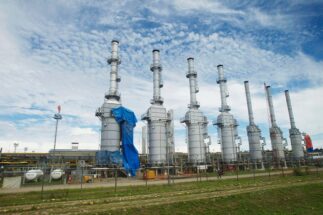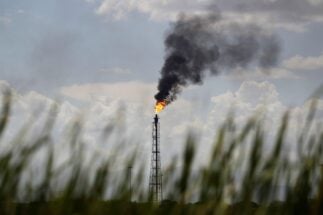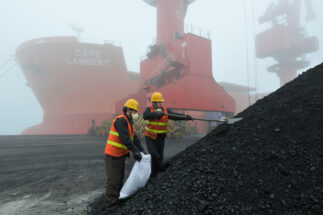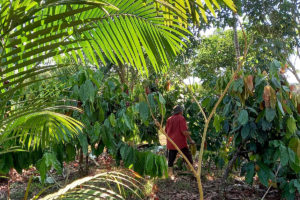Russia’s invasion of Ukraine has put countries’ energy plans amid climate change firmly under the microscope. Russia is one of the world’s leading gas producers, and over 70% of its output is exported to Europe. With the arrival of war, sanctions and plans to slash Russian imports, many countries have had to ask themselves the same question: fall back on coal to make up for the gas shortage, or bet more on renewables? The answers have been varied.
15%
of Colombia's energy was derived from natural gas, as of 2019, according to figures from the Ministry of Mines and Energy
In Colombia, where gas is produced and consumed nationally, the national government considers the fuel as a transitional energy – a resource to be exploited until 100% renewable energy production is achieved. Natural gas has a relatively low share in the country’s energy mix, accounting for just 15% of supply in 2019, according to the National Energy Plan 2020–2050, though this plan also points to it as an increasingly important resource.
This idea is not new, nor is it necessarily Colombian. Natural gas emits between 50% and 60% less carbon dioxide (CO2) than coal burned in a typical plant. Moreover, when used in vehicles, it generates only 1% of the particulate matter that other fuels do. This, in countries where energy is heavily based on coal, has earned it a reputation of being a supposedly cleaner energy and therefore useful for transitions.
But natural gas also emits methane, which is around 80 times more potent than CO2 in its effect on global warming, in its first 20 years after release. For some experts, Colombia’s acceptance of the discourse of gas as a transitional fuel could therefore be a trap. As Felipe Corral, an energy transition researcher at the Technical University of Berlin, points out, all the evidence points to the fact that if humanity wants to meet the target of keeping global temperature rise within 1.5°C above pre-industrial levels by the end of the century, we must leave fossil fuels such as natural gas in the ground.
More specifically, a study published in Nature in 2021 estimated that to have a 50% chance of meeting that target, 60% of the world’s oil and fossil methane gas will have to remain unextracted by 2050.
A roadblock or backup?
A further reason why gas as a transition fuel is a dangerous discourse, adds Patricio Calles Almeida, a researcher at the Stockholm Environment Institute, is that this strategy blocks the possibility of betting on other, renewable alternatives, since both compete for the same resources. Furthermore, she adds, gas should not be discussed as a transition fuel in Colombia when, according to its Ministry of Mines and Energy, the nation’s current reserves are only enough for 7.7 more years.
The answer, in part, comes from Luz Stella Murgas, president of the Colombian Natural Gas Association (Naturgas), which brings together 29 companies representing 98% of the natural gas market in Colombia. She believes gas should not only accompany the transition until the energy is renewable, but even remain as a backup when this point is reached to ensure reliability in the system.
In order to achieve this, Colombia would have to tap into potential gas reserves that would include offshore projects in the Caribbean Sea, and some continental exploration, especially in the departments of Córdoba and Sucre. To understand it better, Murgas explains that this would allow Colombia to have gas for up to 100 years. But by that time, too, the country is supposed to be carbon neutral – not to mention the socio-environmental dilemmas that developing these projects may entail.
Regarding fracking – on which Murgas says no decision will be taken until further information from pilot projects is available – community concerns have been evident.
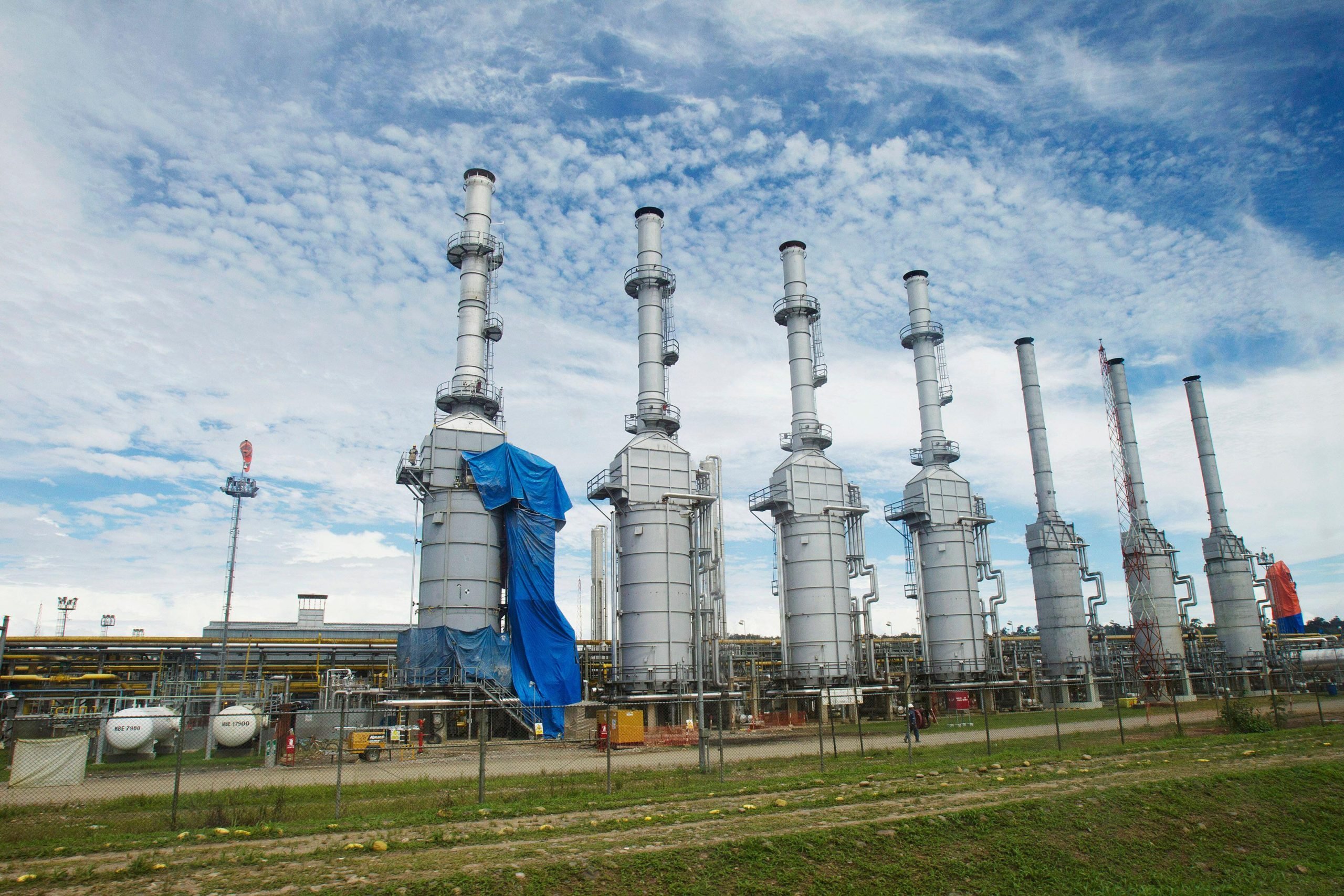
Amarilys Llanos, from the Alianza Colombia Libre de Fracking, says that the organisation is concerned about the impact these projects could have on water. In her department of Cesar, not only is a pilot project set to be carried out, but the National Hydrocarbons Agency (ANH) has awarded a contract to American multinational ConocoPhillips for fracking development. “In addition, there could be methane emissions from leaks, whose footprint could be even larger,” she says.
As for offshore projects, Calles, from the Stockholm Environment Institute, sees both a problem and a risk. The problem is that these could compete with the potential of renewables in the Caribbean region itself. “It would be giving tax incentives to gas and not using them for cleaner and cheaper energy,” he says. “The risk is that as these projects would be carried out in the sea, in nobody’s territory, they would not have a social licence to monitor them.”
But Murgas comments that, for Naturgas at least, the plan is to work to ensure that no such conflicts are encountered with the expansion of gas during the transition. In addition to thinking about investments in the renewables sector, the association signed a carbon neutrality agreement with the government during COP26 to reduce emissions or compensate for them. “There are energy efficiency projects, [consideration of] the circular economy, and many [producers] are entering into the issue of carbon credits,” she adds. As for the use of carbon capture and storage, Murgas says that these are technologies that would first have to be brought to Colombia.
The latest push to boost gas
The government of Iván Duque habitually refers to gas as a transition fuel in Colombia, as a necessary bridge between other fossil fuels and renewables. However, the administration is keen to not simply maintain the level currently relied upon, but increase its output and demand.
“There have been several attempts to make us end up needing gas,” says José Antonio Vega, also a researcher at the Stockholm Environment Institute. “It generates investment in infrastructure for its production and distribution and, when we have no more gas – because current reserves are scarce – there is an excuse for fracking.” He adds that the government has also looked to block alternative energies.
In the nation’s Energy Transition Law of 2021, the first article and objective talks of “dictating norms for the strengthening of the public services of electricity and fuel gas”, which also includes liquefied petroleum gas (LPG). Meanwhile, Law 2128, also created last year, promotes the use of combustible gas in Colombia. For Vega, the document has several inconsistencies, especially from the point of view of climate change.
It’s not logical to increase demand for gas because it is ‘cleaner’. Rather, this is being done to continue using gas to produce other fossil fuels.
One of these – but not the only one, he says – is that it determines that cities with mass transport systems must ensure that at least 30% of the fleet operates with gas-fuelled engines. This could discourage local governments from investing in electric mobility or run counter to electric public transport plans such as the one already in place in the capital, Bogotá.
Vega also points to Colombia’s Hydrogen Roadmap. Through this plan, the Duque government proposes to produce blue hydrogen (whose input can be gas), supposedly to pave the way for green hydrogen (a cleaner energy, produced using water). Moreover, a recent document on energy transition by CONPES, a government advisory body, repeats the same discourse: that of expanding the demand for gas as a transition fuel.
An energy transition for whom?
Another of Llanos’ fears if fracking with natural gas is given the green light is that the history of coal will be repeated in the country: a situation in which energy-producing municipalities are not even guaranteed service from this energy.
His fears are in line with the conclusions reached in a 2019 study published in the journal Energy Policy entitled “Colombian energy planning: Neither for energy, nor for Colombia”.
After analysing the last 40 years of energy planning in the country, the researchers found that successive governments have had difficulty in integrating the relationships between energy, environment and society. The priority has always been to think about energy for export and as a source of income for the economy. Much of this thinking takes place on paper, but it continues to fail in practice, and many networks are still not extended to isolated and economically undeveloped areas.
The situation is clear for Llanos. “In Colombia, the largest consumer of gas is the fossil fuel industry,” he says. “So it doesn’t sound logical that we are increasing the demand for gas because it is ‘cleaner’. Rather, it is to continue using it to produce other fossil fuels.”

